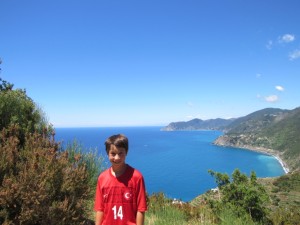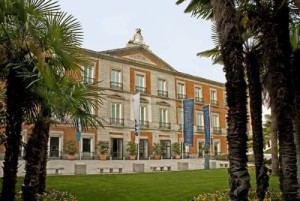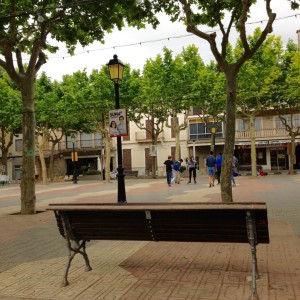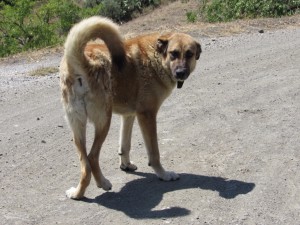By Caleb
Our first stop in Italy was Lucca, about 45 minutes west of Florence. Lucca is still fully surrounded by a wall that was built in the 16th century and then planted with trees along the top in the 19th century. We stayed in Lucca for one week in an apartment just one block outside the wall. For a couple of those days we explored the old city of Lucca where there are many churches, a tower with seven oak trees planted on top, restaurants, and little shops.
In addition to seeing the sites in Lucca, we also took many side trips that week. One of my favorite side trips was to Pisa. When we arrived our first view of the leaning tower was down the long main road. At first glance the leaning tower doesn’t look like it’s leaning, but once you get up close you can really tell. Only my dad, Noah, and I went up to the top. As you walk up you can really feel the tilt.
Another side trip took us to the area called Cinque Terre – five small coastal towns located very close to one another along the Italian coast. When we got to the first town, Riomaggiore, the main path along the coast was closed so we decided to take the hiking trail through the hills to the next town, Manarola. The trail was only a little more than 2 km there and back, but it was straight uphill and then straight downhill on the other side in the hot sun.
Our last side trip was driving through the mountains in the Garfagnana region north of Lucca. We started out driving to a small town called Borgo a Mozzano to see the Devil’s Bridge. The bridge is in a very weird shape so we stopped there to check it out. Next we visited the small village of Bargo and walked around. It was during the afternoon when everything was closed so it was very quiet. As we were driving home we spotted a little town in the hills (Coreglia Antelminella) and decided to go check it out. Once we got there it was practically empty; there were only a few old people sitting outside.
This was a great week because we got to explore Lucca and take many interesting side trips.









































Recent Comments